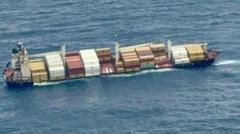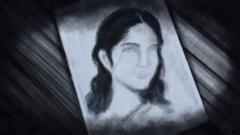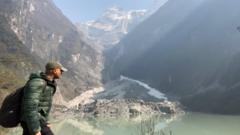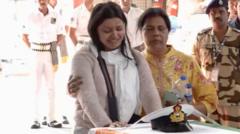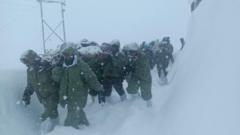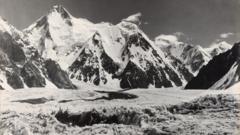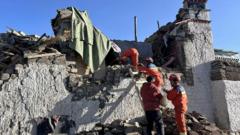After 56 years, the remains of Thomas Cherian, a passenger aboard the ill-fated 1968 Indian Air Force AN-12 aircraft, have been recovered. The plane, carrying 102 passengers, vanished in the Himalayas amid a storm. Years of sporadic discoveries culminated in the recent retrieval of Cherian's body by the Dogra Scouts and Tiranga Mountain Rescue, using advanced technology including drones and Recco radar. His identification was confirmed via a uniform name tag and personal documents. Families of victims express mixed emotions: grief tempered with relief and closure.
**Closure After Six Decades: Body Found from 1968 Indian Air Force Crash**
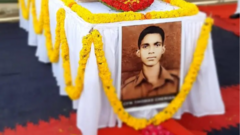
**Closure After Six Decades: Body Found from 1968 Indian Air Force Crash**
In a discovery ending over half a century of uncertainty, the body of Thomas Cherian has been returned to his family, providing long-awaited closure.
The tale of Thomas Cherian, an army craftsman, began with his disappearance aboard an Indian Air Force aircraft that crashed in the Himalayas in 1968. The aircraft, flying over the Rohtang pass, vanished during severe weather conditions, leaving a mystery that lingered for more than five decades. While the first body was discovered in 2003, the wreckage took until 2019 to be fully located, and the recovery of Cherian's body came only recently.
In early October, an unexpected call reached Cherian's brother, Thomas Thomas, in Kerala, informing him that his brother's body had finally been found. For the family, it marked the end of a suffocating 56-year wait. Cherian, just 22 at the time of the crash, was finally brought home for his last rites, draped in the Indian flag, marking a moment of somber closure.
The recovery operation faced numerous challenges, notably the harsh weather and treacherous terrain of the Dhaka glacier area, where Cherian and three others were found. The Indian Army's Dogra Scouts and Tiranga Mountain Rescue utilized satellite imagery, Recco radar, and drones to locate the crash site. The advanced Recco radar, capable of detecting metal under deep snow, played a crucial role in identifying debris, leading to the recovery of four bodies from crevasses up to 16,000 feet above sea level.
For the bereaved families, including that of Narayan Singh, another recovered soldier, the discovery of their loved ones brought mixed emotions. Singh’s family had moved on, his widow starting a new life after losing hope during the long years of waiting, yet the closure brought by these recent findings offers a relief that the departed have been duly honored.
Through decades of searching, army officials maintained communication with the families, a gesture deeply appreciated by those keeping hope alive against overwhelming odds. For many, like Jaiveer Singh from Uttarakhand, who received news of his uncle Narayan Singh’s body, the delayed resolution offers a chance to mourn with proper rites. The families, once bound by the uncertainty of the crash, now find a semblance of peace as the puzzle of the AN-12's disappearance nears completion.
In early October, an unexpected call reached Cherian's brother, Thomas Thomas, in Kerala, informing him that his brother's body had finally been found. For the family, it marked the end of a suffocating 56-year wait. Cherian, just 22 at the time of the crash, was finally brought home for his last rites, draped in the Indian flag, marking a moment of somber closure.
The recovery operation faced numerous challenges, notably the harsh weather and treacherous terrain of the Dhaka glacier area, where Cherian and three others were found. The Indian Army's Dogra Scouts and Tiranga Mountain Rescue utilized satellite imagery, Recco radar, and drones to locate the crash site. The advanced Recco radar, capable of detecting metal under deep snow, played a crucial role in identifying debris, leading to the recovery of four bodies from crevasses up to 16,000 feet above sea level.
For the bereaved families, including that of Narayan Singh, another recovered soldier, the discovery of their loved ones brought mixed emotions. Singh’s family had moved on, his widow starting a new life after losing hope during the long years of waiting, yet the closure brought by these recent findings offers a relief that the departed have been duly honored.
Through decades of searching, army officials maintained communication with the families, a gesture deeply appreciated by those keeping hope alive against overwhelming odds. For many, like Jaiveer Singh from Uttarakhand, who received news of his uncle Narayan Singh’s body, the delayed resolution offers a chance to mourn with proper rites. The families, once bound by the uncertainty of the crash, now find a semblance of peace as the puzzle of the AN-12's disappearance nears completion.




